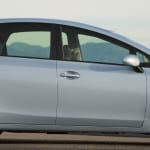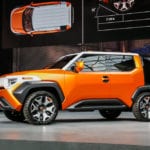It’s been just under a year since Toyota announced their intention of making half of their global sales hybrid or electric by 2030. Considering the automaker’s pedigree as a pioneer in hybrid technology, there was little surprise that they would be among the leaders in this strategy. This is especially true since Toyota’s contention was that hybrid technology would serve as a bridge to the long-term goal of hydrogen fuel cells, which they envisioned as the ultimate long-game. Unfortunately, progress can be a finicky mistress, and delays in their timeline (combined with their favoring of hydrogen over EV technologies) has left them at a disadvantage against EV-focused competitors.
Take GM for example, who have committed themselves to a (quote) “all-electric future”, acknowledging that transition to an all-EV lineup was the only way of maximizing profitability. Or Volkswagen, another example of an automaker who has built a long-term strategy around widespread integration of EV offerings.
And while Toyota approached 2018 as an opportunity to play catch-up, their approach is more measured. Sure, they claim a goal of selling 4.5 million hybrids and 1 million EV and/or Fuel Cell offerings by 2030, but they will use a multi-pronged approach. This will allow them to tailor their strategy based on region, positioning each kind of vehicle for optimized sales within the countries that are most supportive of their integration.
And yet, Toyota’s overall position seems to favor hybrid builds over full-EV offerings. At least that was the impression offered by Gerald Kilmann, Toyota’s top European engineer, who offered Top Gear an intriguing position on the long-term value proposition offered by hybrids, stating…
“We see hybrids lasting a long time, if the shortage of battery manufacturing carries on like today. Say you have 40-kilowatt hours worth of cells. Do you put them in one EV and leave 39 other cars as pure combustion, or do you make 40 hybrids which have roughly 1-kilowatt hour of battery each?”
Kilmann’s contention is that, based on European studies, hybrids spend two-thirds of their operating time running in zero-emission mode with the engine off. This equates to half the distance that such vehicles travel, asserting that the hypothetical integration of 40 hybrids would halve the overall emissions of those vehicles. The alternative of making a single EV would mean that only one-fortieth of mileage driven by those vehicles would reflect zero-emissions. Certainly a worthwhile consideration, and an economical approach to utilizing one’s resources for greater payoff.
And those resources are, in fact, limited. With the progressively more outdated nature of nickel-metal hydride batteries, cobalt would be the preferred approach. But the demand placed upon cobalt reserves by current battery design places Toyota at a disadvantage. There are, of course, other alternatives but evolution presents a major R&D investment that can only be integrated as part of a long-term strategy. In other words, there’s no easy fixes here.
At the end of the day, there’s nothing signed in blood in terms of defining Toyota’s long game, but it’s a very real possibility that they’ll be doubling-down, evolving the hybrid technology which delivered the iconic Prius. Whether or not this places them at a disadvantage among competitors who are training their eyes on full EV integration, remains to be seen.
This has been AutoInfluence. Thanks for listening.




